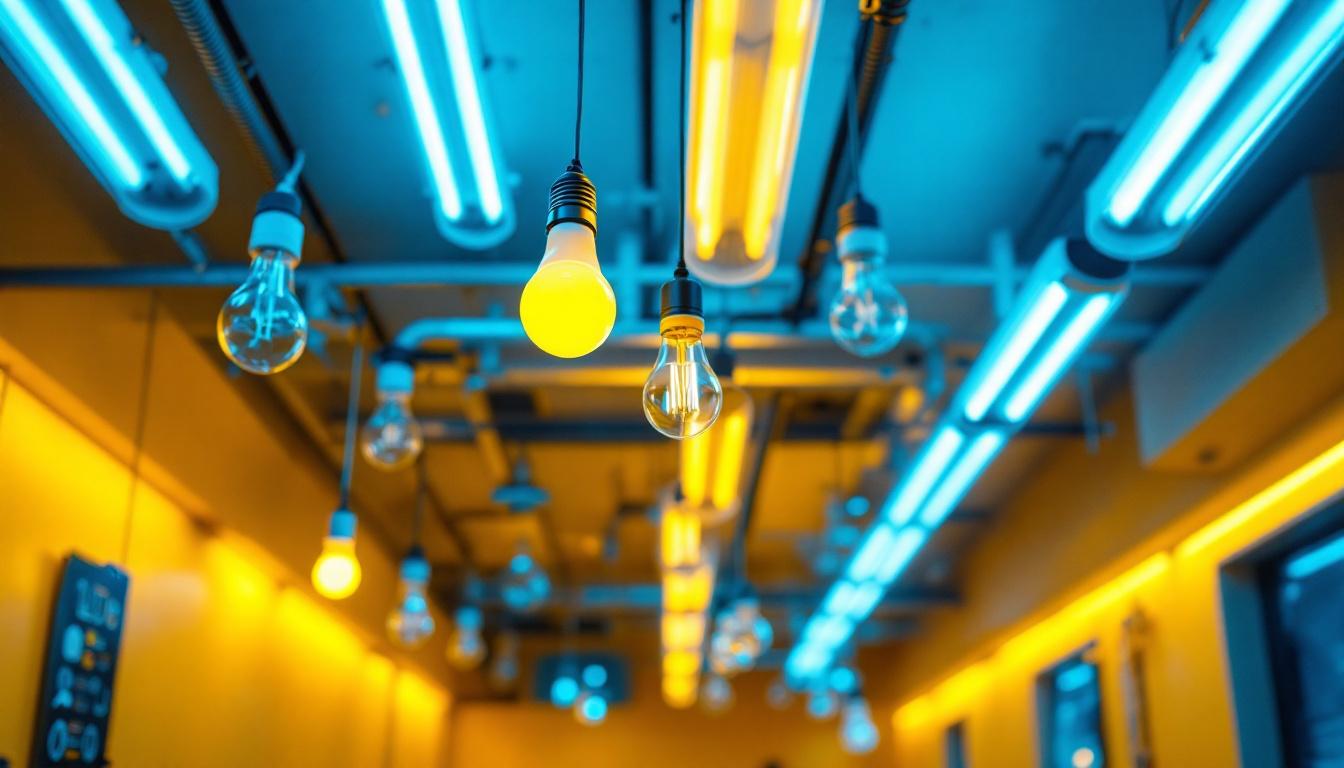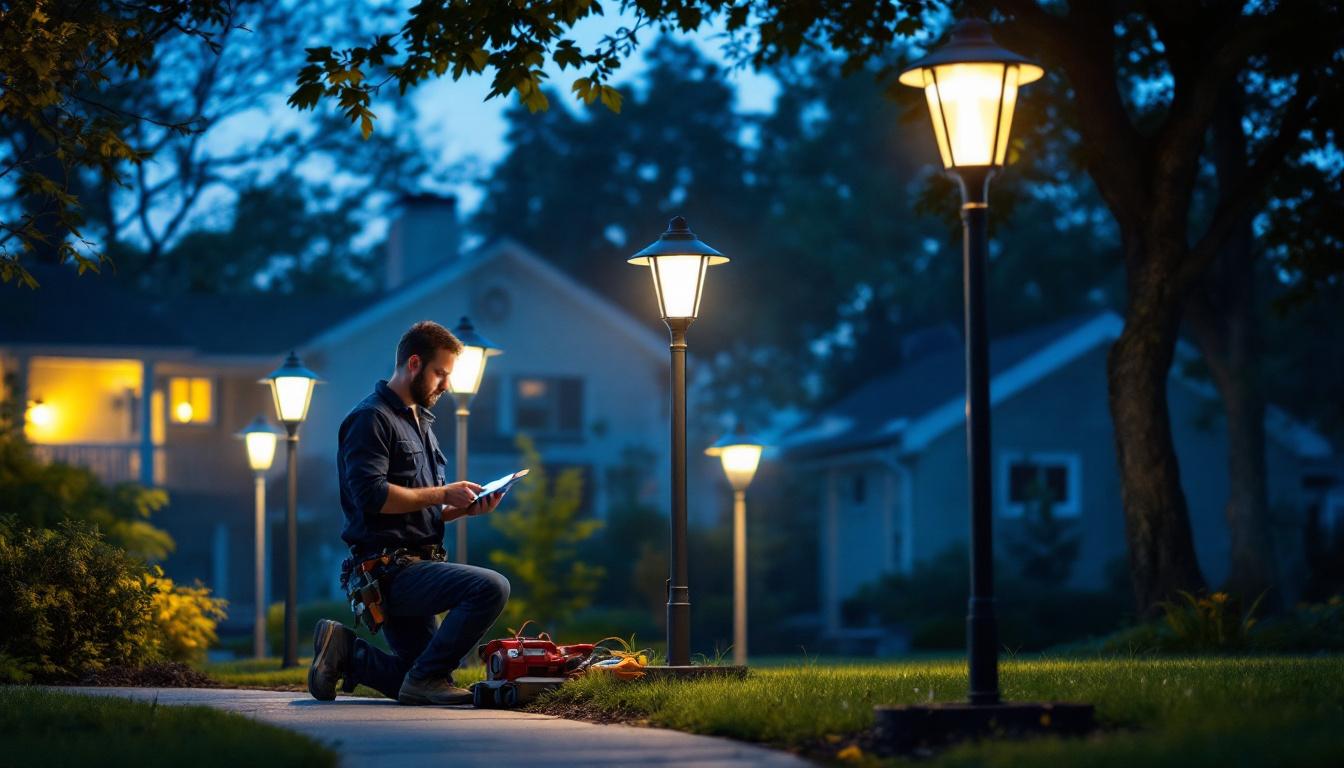
Fluorescent bulbs are a staple in the world of lighting installations, known for their energy efficiency and long lifespan. These bulbs operate by passing an electric current through a gas, which produces ultraviolet light. This light then excites a phosphor coating on the inside of the bulb, creating visible light. This mechanism not only makes fluorescent bulbs more efficient than traditional incandescent bulbs but also allows for a broader range of applications. The versatility of fluorescent lighting has made it a preferred choice in many sectors, including education, healthcare, and retail, where consistent and reliable illumination is essential.
For lighting contractors, understanding the nuances of fluorescent technology is essential. The advantages of these bulbs can significantly influence the quality of lighting installations and the satisfaction of clients. From commercial spaces to residential environments, the right choice of fluorescent bulb can enhance functionality and aesthetics. Furthermore, as energy regulations become stricter, the demand for energy-efficient lighting solutions continues to rise, making it imperative for contractors to stay informed about the latest advancements in fluorescent technology.
Fluorescent bulbs come in various types, each designed for specific applications. The most common types include linear fluorescent tubes, compact fluorescent lamps (CFLs), and high-output fluorescent bulbs. Linear tubes are often used in commercial settings, while CFLs are popular for residential use due to their compact size and versatility. Understanding these types helps contractors make informed decisions based on the needs of their projects. Additionally, the color temperature of fluorescent bulbs can vary, allowing for warmer or cooler light options that can dramatically affect the ambiance of a space.
Additionally, there are specialty fluorescent bulbs designed for unique applications. For instance, some bulbs are made for high-temperature environments, while others are tailored for color-critical tasks, such as those found in art galleries or photography studios. Knowledge of these variations allows contractors to provide tailored solutions to their clients. Beyond standard applications, there are also fluorescent bulbs that incorporate advanced technologies, such as dimming capabilities and smart lighting features, which can further enhance their functionality and appeal in modern installations.
One of the most compelling reasons to utilize fluorescent bulbs in lighting installations is their energy efficiency. Compared to incandescent bulbs, fluorescent bulbs consume significantly less energy to produce the same amount of light. This efficiency translates into lower electricity bills for clients, making fluorescent options an attractive choice for both residential and commercial applications. In fact, many businesses have reported substantial savings on energy costs after switching to fluorescent lighting, allowing them to allocate resources to other important areas of their operations.
Moreover, the longer lifespan of fluorescent bulbs—often lasting up to ten times longer than incandescent bulbs—means reduced replacement costs and maintenance efforts. For contractors, this not only enhances client satisfaction but also positions them as knowledgeable professionals who prioritize cost-effective solutions. Additionally, the environmental benefits associated with reduced energy consumption and waste generation cannot be overlooked. By choosing fluorescent lighting, clients contribute to sustainability efforts, aligning with the growing trend of eco-consciousness in both consumer behavior and corporate responsibility.
Color temperature is a critical aspect of lighting design that can greatly influence the ambiance of a space. Fluorescent bulbs are available in a range of color temperatures, typically measured in Kelvins (K). From warm white (around 2700K) to cool white (around 5000K), the choice of color temperature can affect mood, productivity, and even the perceived size of a space. For instance, warmer tones can make a room feel more intimate and comfortable, which is why they are often used in bedrooms and living areas. Conversely, cooler tones can create a more sterile and focused environment, ideal for offices or laboratories where concentration is key.
For example, warmer color temperatures are often preferred in residential settings, creating a cozy and inviting atmosphere. In contrast, cooler temperatures are favored in commercial environments, as they can enhance focus and alertness. Understanding these nuances allows lighting contractors to recommend the most suitable options for their clients’ specific needs. Additionally, the time of day and the activities taking place in a space can also influence the ideal color temperature; for instance, a dining area may benefit from softer, warmer lighting in the evening to promote relaxation and conversation, while a workspace might require brighter, cooler lighting during the day to stimulate productivity.
The Color Rendering Index (CRI) is another vital factor to consider when selecting fluorescent bulbs. CRI measures a light source’s ability to accurately render colors compared to natural light. A higher CRI indicates better color accuracy, which is particularly important in settings where color differentiation is crucial, such as retail spaces or art studios. For example, a clothing store may choose bulbs with a CRI of 90 or above to ensure that the colors of garments appear true to life, encouraging customers to make purchases.
Fluorescent bulbs typically have a CRI ranging from 60 to 90, with higher-quality options available for applications requiring superior color fidelity. By educating clients about CRI, contractors can help them make informed decisions that enhance the overall effectiveness of their lighting installations. Furthermore, the interplay between CRI and color temperature can create a more harmonious lighting environment. For instance, a warm light with a high CRI can enhance the richness of colors in a home gallery, while a cooler light with a lower CRI might wash out those same colors, diminishing the visual impact of the artwork. This understanding of both color temperature and CRI is essential for achieving the desired aesthetic and functional outcomes in any lighting project.
When it comes to installing fluorescent bulbs, several factors must be taken into account to ensure optimal performance and safety. Proper installation not only maximizes the lifespan of the bulbs but also minimizes potential hazards.
Fluorescent bulbs require ballasts to regulate the current flowing through them. It is essential for contractors to select compatible ballasts for the specific type of fluorescent bulb being installed. Incompatible ballasts can lead to flickering, reduced efficiency, and even premature bulb failure.
Additionally, contractors should be aware of the different types of ballasts available, including magnetic and electronic options. Electronic ballasts are generally more efficient and provide better performance, making them a preferred choice for many installations. Understanding these components ensures that contractors can deliver reliable and effective lighting solutions.
Safety is paramount in any lighting installation. Contractors must adhere to local electrical codes and safety standards when installing fluorescent bulbs. This includes ensuring that wiring is properly rated for the load and that all connections are secure. Failure to comply with safety regulations can lead to hazardous situations, including electrical fires or shock.
Moreover, proper disposal of fluorescent bulbs is crucial due to the presence of small amounts of mercury within them. Contractors should educate clients on safe disposal practices and consider providing information on local recycling programs to promote environmentally responsible behavior.
As sustainability becomes increasingly important in the construction and lighting industries, the environmental impact of fluorescent bulbs cannot be overlooked. While they are more energy-efficient than incandescent bulbs, the production and disposal of fluorescent bulbs do have ecological implications.
Fluorescent bulbs contribute to a reduction in carbon emissions due to their lower energy consumption. By replacing incandescent bulbs with fluorescent options, clients can significantly decrease their carbon footprint. This is particularly relevant for commercial clients looking to enhance their sustainability credentials.
Furthermore, many manufacturers are now focusing on producing more eco-friendly fluorescent bulbs, utilizing materials and processes that minimize environmental impact. Contractors who stay informed about these advancements can offer clients innovative solutions that align with their sustainability goals.
As mentioned earlier, proper disposal of fluorescent bulbs is essential due to their mercury content. Many communities have established recycling programs specifically for fluorescent bulbs, allowing for safe disposal and recycling of materials. Contractors can play a vital role in educating clients about these programs, ensuring that they are disposed of responsibly.
By promoting recycling and safe disposal practices, contractors can further enhance their reputation as environmentally conscious professionals committed to sustainable practices in lighting installations.
The lighting industry is continually evolving, and fluorescent technology is no exception. While LED lighting is gaining popularity, fluorescent bulbs still hold a significant place in many applications. Understanding future trends can help contractors stay ahead of the curve and offer cutting-edge solutions to their clients.
Recent advancements in fluorescent technology have led to the development of more efficient and longer-lasting bulbs. Manufacturers are continually working on improving the performance of fluorescent bulbs, focusing on increasing their energy efficiency and reducing environmental impact. These advancements may include enhanced phosphor coatings and improved ballast designs.
Contractors who stay informed about these developments can provide clients with the latest and most effective lighting solutions, ensuring that their installations remain competitive and relevant in a rapidly changing market.
As smart technology becomes more prevalent in residential and commercial settings, the integration of fluorescent lighting with smart systems is on the rise. This includes the ability to control lighting remotely, adjust brightness levels, and even change color temperatures through smart devices.
Contractors who embrace this trend can offer clients innovative solutions that enhance convenience and energy efficiency. By understanding how to integrate fluorescent lighting with smart technology, contractors can position themselves as forward-thinking professionals ready to meet the demands of modern clients.
Fluorescent bulbs remain a critical component of lighting installations, offering numerous benefits in terms of energy efficiency, longevity, and versatility. For lighting contractors, understanding the various aspects of fluorescent technology—from types and color temperatures to installation considerations and environmental impact—is essential for delivering high-quality solutions.
As the industry continues to evolve, staying informed about advancements in fluorescent technology and emerging trends will empower contractors to provide innovative and sustainable lighting solutions. By prioritizing education and client satisfaction, lighting contractors can ensure their success in an ever-changing landscape.
In conclusion, the importance of fluorescent bulbs in lighting installations cannot be overstated. They are not only a cost-effective choice for clients but also an opportunity for contractors to showcase their expertise and commitment to quality. Embracing the full potential of fluorescent lighting will lead to enhanced client relationships and a brighter future for the lighting industry.
Ready to elevate your lighting installations with the efficiency and versatility of fluorescent bulbs? At LumenWholesale, we provide lighting contractors with the highest quality, spec-grade fluorescent lighting products at unbeatable wholesale prices. Say goodbye to local distributor markups and hello to superior lighting solutions that meet the strictest industry standards. Plus, with free shipping on bulk orders, you can stock up on premium lighting without any hidden fees. Don’t compromise on quality or value—choose LumenWholesale for all your lighting needs. Wholesale Lighting at the Best Value is just a click away.

Discover essential insights into ceiling fan replacement parts that every lighting contractor needs to master.

Discover the ultimate guide to LED fluorescent light fixtures with our essential checklist tailored for lighting professionals.

Discover how outdoor weatherproof boxes enhance lighting contractor projects with durability, safety, and compliance.

Explore the essential guide for lighting contractors as we delve into the most frequently asked questions about light post covers.